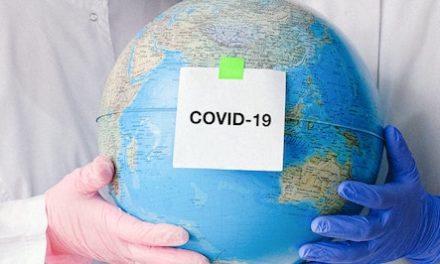Abstract
This research paper advocates for the positive impacts of trade liberalization policies on Central African economies, emphasizing the significant roles played by the World Trade Organization (WTO), International Monetary Fund (IMF), and World Bank. The findings demonstrate that trade liberalization, through tariff reductions and trade facilitation programs, has been a catalyst for economic growth and diversification. In particular, countries like Cameroon and the Central African Republic have experienced increased export volumes and foreign direct investment (FDI), which are crucial for economic development and reducing dependence on a narrow range of commodities.
The reduction of tariffs has also led to lower consumer prices, improving access to a variety of affordable products and enhancing consumer welfare. This, in turn, has stimulated domestic demand and contributed to economic vibrancy. Infrastructure improvements, driven by the World Bank’s Trade Facilitation Support Programs (TFSPs), have been instrumental in enhancing trade efficiency, reducing logistical costs, and increasing trade volumes. These developments have not only facilitated smoother trade flows but also created jobs and promoted regional connectivity.
While acknowledging challenges such as fiscal deficits due to reduced tariff revenues and increased competition for local industries, the paper argues that these issues can be effectively managed with appropriate policy measures. Strengthening domestic revenue systems, investing in infrastructure, and providing targeted support for small and medium enterprises (SMEs) can mitigate these challenges and ensure that the benefits of trade liberalization are widely distributed.
Furthermore, regional cooperation through frameworks like the Central African Economic and Monetary Community (CEMAC) can enhance intra-regional trade, providing stability against global market fluctuations and fostering economic resilience. By adopting a balanced approach that leverages the benefits of open markets while addressing the needs of local economies, Central African countries can achieve sustainable development and greater economic stability.
In conclusion, this paper supports trade liberalization as a powerful tool for economic advancement in Central Africa. With strategic and complementary policies, the positive impacts of trade liberalization can be maximized, leading to long-term economic growth and stability.
I. Introduction
Trade liberalization, the process of reducing trade barriers, is a cornerstone of global economic policy, aimed at promoting free trade and economic growth (Thirlwall, 2000).
In Central Africa, a region characterized by chronic political corruption (Goutte et al., 2021) and a lack of foreign investment (Thales, 2017), the impact of trade liberalization policies is profound. CEMAC countries face significant impediments in integrating into global supply chains, making international collaboration and funding crucial. Trade liberalization promises various benefits, including enhanced market access, increased domestic efficiency, and economic diversification. However, there remain significant drawbacks, such as exposure to global market fluctuations, potential loss of local industries, and socio-economic inequality.
Supranational organizations such as the World Trade Organization (WTO), International Monetary Fund (IMF), and World Bank (WB) play pivotal roles in advocating and implementing free trade policies worldwide.
This paper aims to explore the pros and cons of trade liberalization policies implemented by these supranational organizations, specifically, their impacts on developing economies in Central Africa; it seeks to contribute to the ongoing discourse on the role of trade liberalization in fostering sustainable development in Central Africa.
a) Brief overview of trade liberalization
Trade liberalization is a fundamental economic policy aimed at reducing or eliminating barriers to trade between countries. These barriers can include tariffs, quotas and various forms of protectionism that restrict the free flow of goods and services across borders. The primary objective of trade liberalization is to create a more open and competitive market where countries can trade. This process can foster economic growth, enhance efficiency and promote innovation by allowing countries to specialize in the production of goods and services they can produce most efficiently. (Trade Liberalization: Definition, How It Works, and Example, 2024)
b) Importance of supranational organizations in global trade
Supranational organizations such as the International Monetary Fund (IMF), World Trade Organization (WTO), and the World Bank play a pivotal role in promoting and facilitating trade liberalization globally. These organizations provide a framework for international cooperation, establish rules and norms that govern international trade, and offer financial and technical assistance to developing countries and economies. The IMF, for instance, supports trade liberalization through its Structural Adjustment Programs (SAPs) which will be explained later in the paper, which often include conditions for reducing trade barriers. The WTO oversees the implementation of international trade agreements.
II. Background on Trade Liberalization
a) Definition and key concepts
Trade liberalization refers to the process by which governments reduce or eliminate barriers to international trade, allowing goods and services to move more freely across borders. Key components of trade liberalization include the reduction or removal of tariffs, import quotas, and various forms of protectionism. The primary goal is to create an open, competitive international marketplace where countries can trade based on their comparative advantages, thereby promoting economic growth and efficiency. (Trade Liberalization: Definition, How It Works, and Example, 2024)
Key Concepts:
- Tariffs: Taxes imposed on imported goods to protect domestic industries from foreign competition.
- Trade Barriers: Restrictions set by governments to control the flow of foreign goods and services into the domestic market. These can be tariff-based (taxes) or non-tariff barriers (quotas; import licenses).
- Free Trade: A policy where governments do not restrict imports from or exports to other countries, often involving the reduction or elimination of tariffs, quotas, and other restrictions.
b) Historical context of trade liberalization
The concept of trade liberalization has evolved significantly since World War II. The establishment of the General Agreement on Tariffs and Trade (GATT) in 1947 marked an important moment in the history of global trade. This agreement aimed to ensure that international trade flows as smoothly and predictably as possible. (WTO, The History of Multilateral Trading System, 2021)
In 1995, the World Trade Organization was established, succeeding GATT and expanding to include new areas such as property and services. The WTO continues to play a crucial role in promoting trade and liberalization through its various agreements and mechanisms. (Dollar & Irwin, 2022)
The Post-World War II period also saw the rise of trade agreements and economic blocs, such as the European Union (EU) and the North American Free Trade Agreement (NAFTA), which aimed to further promote trade liberalization among member countries. Developing countries, particularly in Asia and Latin America, adopted export-oriented growth strategies, integrating more deeply into the global economy. This shift was driven by the acknowledgment that participating in global trade could increase economic growth and development. (Global Trade Liberalization and the Developing Countries — an IMF Issues Brief, 2024)
c) Role of supranational organizations in promoting trade liberalization
Supranational organizations such as the International Monetary Fund (IMF), World Trade Organization (WTO), and the World Bank have played a pivotal role in promoting trade liberalization globally. These organizations provided frameworks for international trade and cooperation and established rules to facilitate freer trade.
- International Monetary Fund (IMF): The IMF supports trade liberalization by providing financial assistance and policy advice to countries facing economic crises such as developing countries. Through Structural Adjustment Programs (SAPs) which will be explained later in the paper, the IMF often requires countries to implement trade liberalization measures, such as reducing tariffs and opening up markets to foreign competition. (Global Trade Liberalization and the Developing Countries — an IMF Issues Brief, 2024)
- World Trade Organization (WTO): The WTO is responsible for overseeing international trade rules. It facilitates negotiations to reduce trade barriers and resolve trade disputes among member countries. The WTO’s agreements, such as the General Agreement on Trade in Services (GATS) and the Agreement on Trade-Related Aspects of Intellectual Property Rights (TRIPS), aim to create a more open and predictable trading environment. (Dollar & Irwin, 2022)
- World Bank: The World Bank promotes trade liberalization as part of its broader mission to reduce poverty and support developing countries and economies. It provides financial and technical assistance to developing countries to help them implement trade reforms and improve their trade infrastructure. The World Bank’s Trade Facilitation Support Program (TFSP) is an example of its efforts to enhance trade efficiency and reduce trade costs for developing countries. TFSP’s will be explained in depth later in the paper. (Global Trade Liberalization and the Developing Countries — an IMF Issues Brief, 2024)
III. Overview of Central African Economies
a) Economic characteristics of the region
Central Africa is a region in Africa consisting of, as defined by the African Development Bank, the Central African Republic, the Democratic Republic of the Congo, Gabon, Cameroon, Chad, Congo and Equatorial Guinea (African Development Bank, n.d.). This region has a real GDP growth rate of 5% in 2022, an increase compared to 2021’s 3.4% growth. Both the overall budget balance and current account balance improved from 2021 to 2022. Still, both remain in deficit despite the export prices of their most common products – crude oil, minerals and other commodities – increasing. It is believed that the cause of the deficit are external uncertainties, such as the Russo-Ukrainian war, that caused increased government spending on energy and food. In essence, the overall current economic trend in Central Africa has been upward sloping, but remains fragile largely due to external factors and internal and regional political tension (African Development Bank, n.d.).
b) Current trade patterns and challenges
Central African economies primarily export raw materials and agricultural products, including oil, timber, coffee, cocoa, and cotton. Key trading partners are the European Union, China, and India, with limited intra-regional trade within CEMAC.
Key Export Products:
- Oil and petroleum products: Dominant in Chad and Gabon.
- Agricultural products: Significant in Cameroon and CAR.
- Timber: Major in Gabon and the Republic of Congo.
Challenges:
1. Economic diversification:
- Dependence on commodities: Vulnerability to global price fluctuations.
- Infrastructure deficiencies: Poor transport and logistics hinder trade efficiency and increase costs.
2. Trade barriers and regulations:
- Non-tariff barriers: Complex customs procedures and bureaucratic hurdles impede trade.
- Tariffs and protectionism: Existing protectionist policies affect competitiveness.
3. Political instability and governance issues:
- Conflict and instability: Disrupts trade and deters investments.
- Corruption: Increases transaction costs and deters investments.
4. Limited access to finance:
- Financing trade and investment: Limited access to credit hinders SME growth and international trade.
5. Regional integration:
- Intra-regional trade: Low due to similar economic structures and infrastructural deficits.
6. Human capital development:
- Skills gap: Lack of skilled labor affects productivity and economic diversification.
c) Importance of trade for development in Central Africa
Trade development is crucial for Central Africa’s economic growth and poverty alleviation. By enhancing trade, countries in the region can diversify their economies beyond primary commodities, reducing vulnerability to global price fluctuations. Improved trade infrastructure and policies facilitate market access for local businesses, fostering industrialization and job creation. Additionally, trade development can attract foreign direct investment, bringing in new technologies and skills that boost productivity. Strengthening regional trade ties through economic communities like CEMAC can also enhance economic stability and integration into global value chains.
IV. Literature Review
Trade liberalization policies exist in multiple forms within Central Africa, with varying advantages and disadvantages; they fulfill their purpose of stimulating economic growth. This paper will investigate three policies from three different supranational organizations – which are also the three core sources – within the developing nations of Central Africa, and analyze their effectiveness and possible improvements.
The IMF’s structural adjustment programs (SAPs) have been instrumental in encouraging trade liberalization by reducing tariffs and non-tariff barriers, thus fostering a more competitive economic environment. However, the implementation of these policies has also faced criticism for exacerbating inequality and social challenges. The IMF’s work was mainly found using credible sources such as the IMF website and reports.
The World Trade Organization has played a crucial role in promoting trade by reducing tariffs. This process began with the General Agreement on Tariffs and Trade in 1947, and continued with the establishment of the WTO in 1995. The main goal of these efforts is to make international trade smoother and more predictable by lowering barriers that restrict the flow of goods across borders (World Trade Organization, 2021; Dollar & Irwin, 2022).
Studies show that reducing tariffs has significantly boosted trade and economic growth in many developing countries, including those in Central Africa. For example, in Cameroon, lower tariffs have improved market access, leading to increased exports, especially in agricultural products. Similarly, the Central African Republic has experienced growth in trade volumes following the reduction of tariffs. These benefits include attracting foreign direct investment, which brings new technologies and skills to local industries, enhancing their productivity and competitiveness (World Trade Organization, 2023a; Hufbauer & Schott, 2005).
Despite these positive outcomes, there are notable challenges. Many Central African countries depend on tariffs as a major source of government revenue. Reducing tariffs can lead to fiscal deficits, limiting funds available for essential public services like healthcare and education. Additionally, local industries may struggle to compete with cheaper imported goods, leading to job losses and business closures (World Trade Organization, 2023a).
This review found that trade liberalization is a generally beneficial strategy for developing economies in Central Africa. All sources considered both positive and negative impacts, deeming them multifaceted and as a result of the sources’ nature to report statistics and facts unbiasedly, they are viewed credibly.
V. International Monetary Fund (IMF) Policy: Structural Adjustment Programs (SAPs)
a) Description of SAPs
Structural Adjustment Programs (SAPs) are a set of economic policies and loan conditions implemented by the International Monetary Fund (IMF) to assist countries experiencing economic crises, such as Central African Economies. These programs aim to adjust a country’s economic structure, improve international competitiveness, and restore its balance of payments. SAPs typically consist of loans, known as Structural Adjustment Loans (SALs), provided to countries facing economic difficulties. (Wikipedia Contributors, 2024)
The key components of SAPs generally include:
- Fiscal austerity measures to reduce government spending and budget deficits.
- Privatization of state-owned enterprises.
- Trade liberalization and reduction of trade barriers.
- Deregulation of the economy.
- Currency devaluation.
- Higher interest rates to control inflation.
- Reduction of subsidies and social spending.
The IMF, along with the World Bank, requires borrowing countries to implement these policies as conditions for obtaining new loans or lowering interest rates on existing ones. SAPs’ stated goals are to boost economic growth, address balance-of-payment deficits, and reduce poverty (The IMF and the Poor Pamphlet 52 – IMF-Supported Programs and the Poor, 2024).
b) Pros of SAPs for Central African economies
- Macroeconomic stability: SAPs typically require governments to reduce budget deficits by cutting public spending and increasing revenue collection. This helps control the money supply and reduces inflationary pressures caused by excessive government spending. SAPs have successfully ended episodes of high inflation, particularly when rates exceed 40% in Central African countries. (The IMF and the Poor Pamphlet 52 – IMF-Supported Programs and the Poor, 2024)
- Improved fiscal management: SAPs typically require governments to cut spending, particularly in non-essential or inefficient areas. This can include reducing public sector employment, cutting subsidies, and limiting social program expenditures. This means that SAPs often reduce government budget deficits, which can help countries maintain more sustainable fiscal policies. (ipsadmin, 1998) (fpifadmin, 2005)
- Increased foreign investment: SAPs typically require countries to reduce or eliminate tariffs, quotas, and other trade barriers. This makes it easier and more attractive for foreign companies to export goods and services to these countries, thereby increasing FDI. By creating a more open and competitive market, SAPs encourage foreign investors to enter the market, hoping to capitalize on new opportunities. Thus by liberalizing trade and investment policies, SAPs can attract more foreign direct investment, potentially leading to job creation and technology transfer. (ipsadmin, 1998)
- Enhanced competitiveness: When a country devalues its currency as part of a Structural Adjustment Program, its exports are relatively cheaper in the global market. This occurs because the same amount of foreign currency can now buy more of the country’s goods. Thus, currency devaluation and trade liberalization can make exports more competitive globally, potentially boosting export-led growth. (Wikipedia Contributors, 2024).
- Debt management: SAPs often include provisions for renegotiating existing debt, allowing countries to extend repayment periods or adjust interest rates. This can help make debt payments more manageable in the short term. SAPs can help countries meet their debt payment schedules and improve the creditworthiness of Central African economies in international financial markets. (MJE, 2024) (ipsadmin, 1998)
- Structural reforms: SAPs often include measures to improve governance, transparency, and efficiency in public institutions, which can lead to long-term economic benefits. (ipsadmin, 1998) (Wikipedia Contributors, 2024)
c) Cons of SAPs for Central African economies
- Short-term economic hardship: SAPs often require governments to cut public expenditures, which can result in layoffs of government workers and reduced social services. Thus, the strict measures required by SAPs can lead to increased unemployment, reduced social services, and lower living standards in the short term. (ipsadmin, 1998) (fpifadmin, 2005)
- Increased inequality: SAPs have been criticized for widening the gap between rich and poor, as the benefits of economic reforms often do not extend down to the most vulnerable populations in Central Africa. (ipsadmin, 1998)
- Vulnerability to external shocks: As countries open their economies and reduce trade barriers, they become more dependent on international trade. This exposes them to price volatility in global commodity markets and fluctuations in export demand. Thus, trade liberalization and increased integration into the global economy can make countries more susceptible to external economic shocks and market fluctuations. (Essers, 2013) (ipsadmin, 1998)
- Food insecurity: SAPs often include measures to liberalize trade, which can flood local markets with cheaper imported food products. This influx of imports can outcompete local farmers, who may be unable to produce food at such low costs due to a lack of subsidies and support. Consequently, local farmers may abandon agriculture or switch to cash crops for export, reducing locally produced food availability. Thus, SAPs often increase dependency on food imports, negatively impacting local agriculture and food security. (ipsadmin, 1998) (Vibeke Bjornlund et al., 2022) (Chapter 4: Structural Adjustment and Food Stabilization and Security Policy, 2024)
- Uneven implementation: The success of SAPs varies widely among countries, with some experiencing limited benefits or even adverse outcomes due to poor sequencing of reforms or lack of consideration for local economic conditions. (The IMF’s Role in Structural Adjustment on JSTOR, 2024)
- Social unrest: The harsh economic measures required by SAPs can lead to political instability and social unrest as populations protest against reduced social services and increased economic hardship. (ipsadmin, 1998)
In conclusion, while Structural Adjustment Programs have had some success in stabilizing economies and promoting fiscal discipline in Central African countries, they have also been associated with significant social costs and uneven development outcomes. The debate over the effectiveness of SAPs continues, with many experts calling for more nuanced, country-specific approaches to economic reform that balance macroeconomic stability with social welfare and long-term sustainable development.
VI. World Trade Organization (WTO) Policy: Tariff Reduction
a) Overview of tariff reduction policy
The World Trade Organization (WTO), founded in 1995, is the global body responsible for regulating international trade. One of its main objectives is to reduce trade barriers, including tariffs, to promote smoother and fairer trade across the world. This goal is achieved through a series of multilateral trade negotiations where member countries agree on binding commitments to lower tariffs.
The origins of the WTO’s tariff reduction efforts can be traced back to the General Agreement on Tariffs and Trade, established in 1947. The GATT provided a platform for countries to negotiate reductions in tariffs and other trade barriers. The Uruguay Round (1986-1994) was particularly significant, leading to the creation of the WTO and resulting in substantial tariff reductions globally (WTO, 2023; EveryCRSReport.com, 2023). The Doha Development Round, launched in 2001, aimed to further reduce tariffs with a focus on aiding developing countries, although it has faced challenges in reaching consensus (WTO, 2023).
The WTO’s tariff reduction policies are implemented through binding commitments, where member countries agree to maximum tariff rates on imports. This creates a more predictable trading environment by preventing sudden increases in tariffs. The Most-Favored-Nation (MFN) principle, a core component of the WTO agreements, ensures that any tariff concession granted to one member must be extended to all members, promoting non-discrimination in international trade (WTO, 2023; EveryCRSReport.com, 2023; SpringerLink, 2017).
According to the WTO’s 2023 Tariff Profiles, these policies have significantly lowered global tariffs, contributing to increased trade volumes and economic integration (WTO, 2023). This reduction in trade barriers is especially important for developing countries, including those in Central Africa, which rely heavily on exports for economic growth.
b) Pros of tariff reduction for Central African economies
1. Market access and trade expansion:
- Improved market access: Tariff reductions enhance the ability of Central African economies to export goods competitively due to lower import costs in target markets. Reduced tariffs facilitate the export of agricultural products and raw materials, which are major export commodities for many Central African countries. The WTO Trade Policy Review for Cameroon highlights how improved market access has boosted export volumes, particularly in agriculture. (World Trade Organization, 2023a)
- Trade volume growth: Historical data indicates a positive correlation between tariff reductions and trade volume growth. For example, the Central African Republic has seen steady increases in trade volumes following improved trade policies. (World Trade Organization, 2023a; World Bank Group, 2021)
2. Economic growth and development:
- Stimulating economic growth: Increased trade resulting from tariff reductions can drive economic growth. Enhanced market access leads to higher production levels, job creation, and income growth. Economic diversification through access to various markets reduces dependence on a limited range of commodities, contributing to more stable economic development. (World Trade Organization, 2023a; World Bank Group, 2021)
- Technological and skill transfer: Foreign direct investment often accompanies tariff reductions as countries become more attractive investment destinations. This FDI brings new technologies and skills, fostering innovation and productivity improvements in local industries. For instance, Cameroon has seen increased FDI in its agricultural and manufacturing sectors following tariff reductions. (World Trade Organization, 2023a; Hufbauer & Schott, 2005)
3. Consumer benefits:
- Lower consumer prices: Tariff reductions generally lower the prices of imported goods, benefiting consumers by providing access to a wider variety of affordable products. This increase in consumer welfare can lead to a higher standard of living and stimulate domestic demand. (World Trade Organization, 2023a; World Bank Group, 2021)
4. Increased competitiveness:
- Enhanced efficiency: Lower tariffs encourage domestic industries to become more efficient and competitive by exposing them to international competition. This can lead to better resource allocation and higher productivity, benefiting the overall economy. (World Trade Organization, 2023a; Hufbauer & Schott, 2005)
- Integration into global value chains: Reduced tariffs facilitate the integration of Central African economies into global value chains, enabling them to specialize in certain stages of production and benefit from economies of scale. (World Bank Group, 2021)
5. Trade diversification:
- Reduced reliance on single markets: Tariff reductions can help Central African countries diversify their trade partners, reducing reliance on a few export markets and spreading risk. This diversification can make economies more resilient to external shocks. (World Trade Organization, 2023a; World Bank Group, 2021)
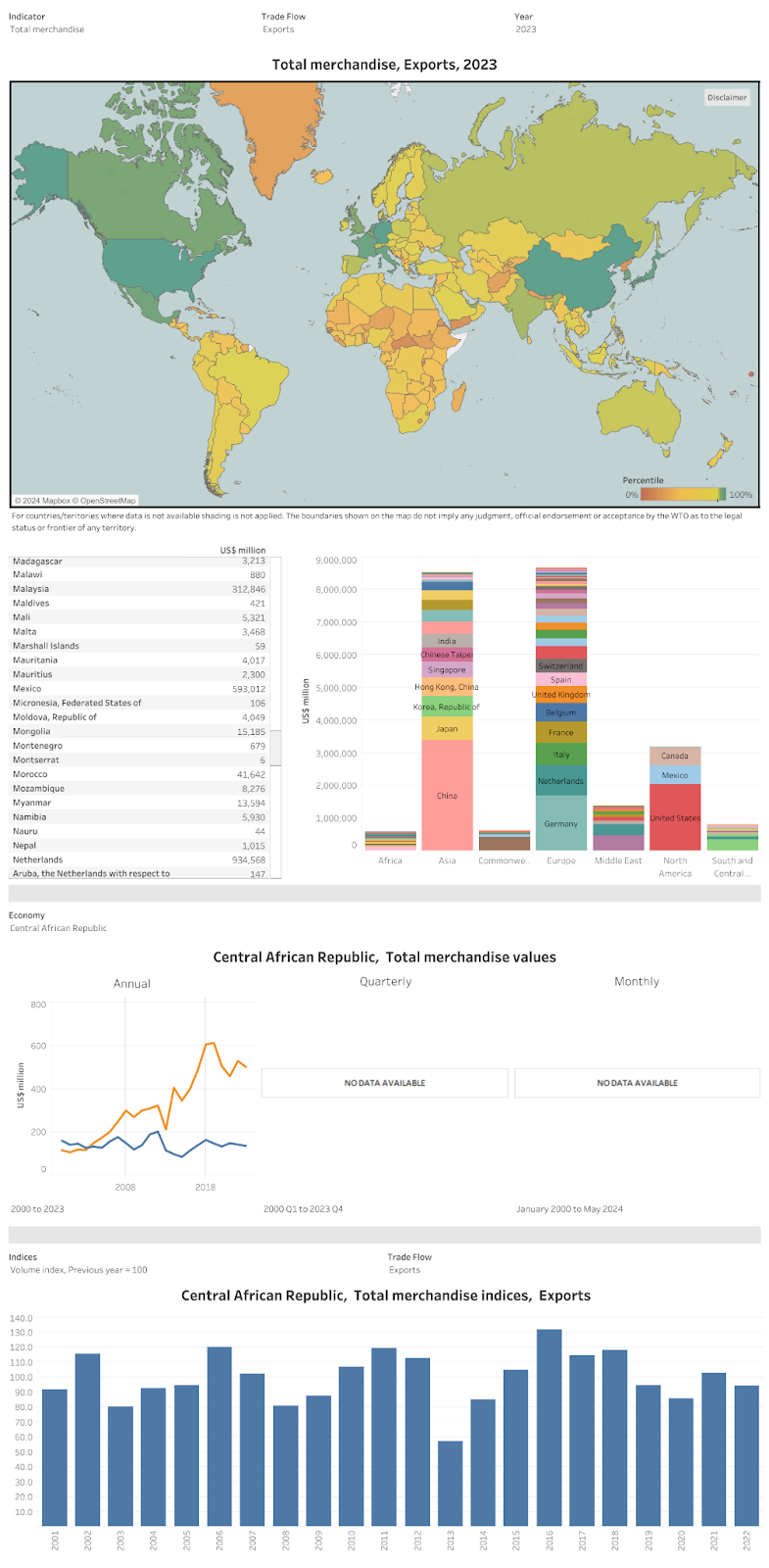
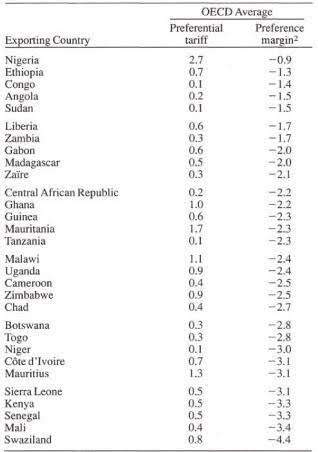
Figure 1: Tariff reduction and export growth. Graph showing average tariff rates and export growth in Central African countries.
c) Cons of tariff reduction for Central African economies
1. Revenue loss:
- Fiscal deficits: Many Central African countries rely heavily on tariffs as a major source of government revenue. Reducing tariffs can lead to significant fiscal deficits if alternative revenue sources are not developed, constraining government spending on essential public services such as healthcare, education, and infrastructure. Cameroon, for instance, has faced challenges in maintaining government revenue levels following tariff reductions. (World Trade Organization, 2023a; World Bank Group, 2021).
- Weak revenue systems: The World Bank emphasizes the need for strengthening domestic revenue mobilization in the Central African Republic to compensate for the loss in tariff revenue. (World Bank Group, 2021)
2. Domestic industries and job losses:
- Exposure to international competition: Tariff reductions can expose nascent domestic industries to intense international competition, potentially leading to job losses and business closures. Industries not yet competitive on a global scale may struggle to survive, impacting employment and economic stability. The Dominican Republic, as highlighted in its WTO Trade Policy Review, experienced significant industry restructuring and job losses in certain sectors following tariff reductions. (World Trade Organization, 2023b; World Bank Group, 2021)
- Structural unemployment: The shift from protected to competitive markets can cause structural unemployment as industries adjust to new market conditions. Workers in less competitive sectors may find it difficult to transition to new jobs without adequate retraining programs. (World Trade Organization, 2023a; Hufbauer & Schott, 2005)
3. Dependence on imports:
- Harming local producers: A decrease in tariffs can increase dependence on imports, potentially harming local producers who cannot compete with cheaper imported goods. This can stifle the growth of domestic industries and reduce incentives for local production investments. (World Trade Organization, 2023a; World Bank Group, 2021)
- Vulnerability to price fluctuations: Increased reliance on imports can make economies vulnerable to global price fluctuations, particularly for essential goods such as food and energy. (World Bank Group, 2021)
4. Trade imbalances:
- Potential for increased trade deficits: While tariff reduction aims to balance trade, there is a risk that Central African economies might experience increased trade deficits if imports grow faster than exports. Such imbalances can lead to economic instability and increased foreign debt. (World Trade Organization, 2023a; World Bank Group, 2021)
- Dependency on export commodities: Reduced tariffs can exacerbate dependency on a few export commodities, making economies susceptible to global market volatility and price swings in those commodities. (World Bank Group, 2021)
5. Impact on small and medium enterprises (SMEs)
- Challenges for SMEs: Small and medium enterprises may find it difficult to compete with larger, more established foreign firms following tariff reductions. Without adequate support, SMEs may struggle to survive, leading to job losses and reduced economic diversity. (World Trade Organization, 2023a; World Bank Group, 2021)
- Need for adaptation: SMEs may require significant investment to upgrade their technologies and processes to remain competitive in a liberalized trade environment, which can be challenging without access to financing and support services. (World Bank Group, 2021)
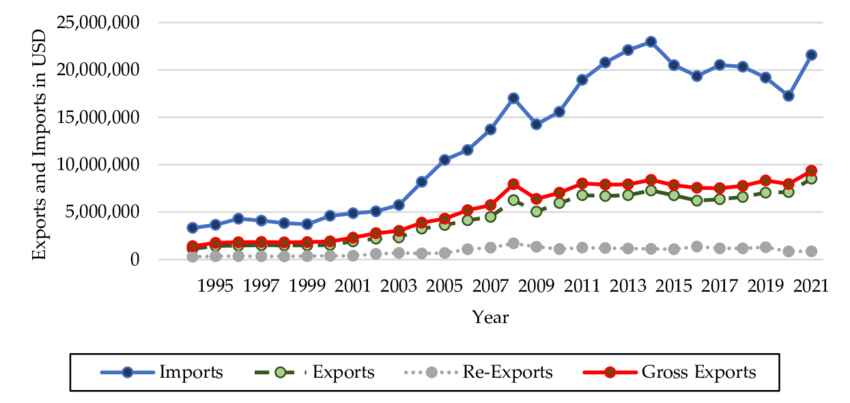
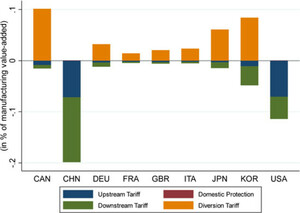
Figure 2: Tariff reduction and export growth correlation. Graph showing the correlation between average tariff rates and export growth in Central African countries.
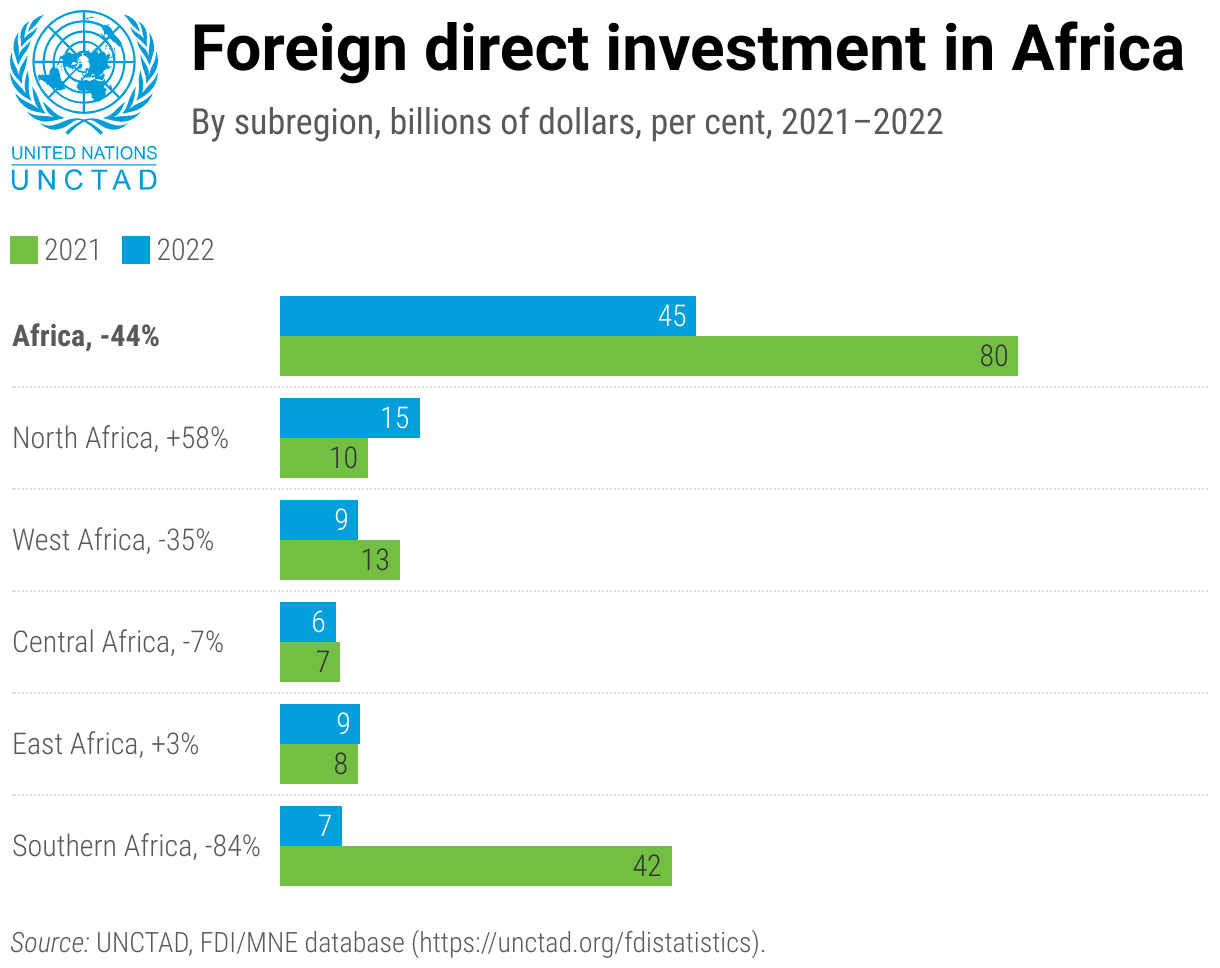
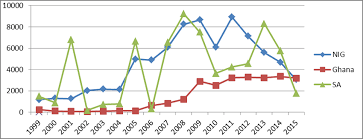
Figure 3: FDI inflows. Graph showing foreign direct investment in Africa.
These data visualizations help clarify the relationship between tariff policies and economic outcomes, highlighting both the benefits and challenges faced by Central African economies under the WTO framework.
In conclusion, the WTO’s tariff reduction policies have driven economic growth and diversification in Central African economies by enhancing market access, increasing trade volumes, and attracting foreign direct investment. These benefits also include lower consumer prices and improved competitiveness. However, the challenges include fiscal deficits due to reduced government revenue, threats to domestic industries from international competition, and increased dependence on imports. Addressing these challenges through strengthened domestic revenue systems, infrastructure investments, and targeted support for SMEs, along with fostering regional cooperation, is essential to balance the positive and negative impacts of tariff reductions and ensure sustainable economic development.
VII. World Bank Group (WBG) Policy: Trade Facilitating Support Programs (TFSPs)
a) Description of TFSPs
The Trade Facilitation Support Program (TFSP) is an initiative by the World Bank aimed at enhancing the trade capabilities of developing countries, such as Central African countries. The program aims to improve national trade logistics, reduce trade costs, and enhance trade competitiveness, thereby promoting economic growth and development across CEMAC. TFSPs typically consist of infrastructure loans and grants, technical assistance aimed at improving infrastructure (e.g., ports, roads), customs and border management, and regulatory frameworks (World Bank, 2024).
The key components of TSFPs generally include:
- Trade policy reforms
- Infrastructure development
- Capacity building
- Technology integration
- Customs modernization
- Regulatory improvements
- Public-private partnership
- Monitoring and evaluation
The World Bank requires borrowing countries to implement these policies as conditions for obtaining new funding and skills development. TFSP’s stated goal is to implement ‘practical reform of existing constraints and bottlenecks to cross-border trade’ (Trade Facilitation Agreement Facility, 2022).
b) Pros of TFSPs for Central African economies
- Economic growth and diversification: TFSPs aid in stimulating economic activity by encouraging diversification of export products and markets (United Nations, 2019); this diversification is particularly pertinent for Central African economies that remain vulnerable to Primary Product Dependency. The Republic of Congo, for example, is entirely dependent on the production and export of crude oil placing undue pressure on the industry and limiting alternative Congolese production sectors and export diversification. The TFSP is essential for the promotion of sustainable economic growth across CEMAC via reducing dependency on limited commodity exports (Sustainable Development Fund, 2016). Additionally, TFSPs have the potential to create jobs in the logistics, transportation and trade sectors contributing to overall economic development.
- Enhanced trade efficiency: TFSPs place funding to streamline customs procedures and reduce administrative bottlenecks – a common plight for developing nations. Further, the time and cost of trading across borders are reduced by commerce infrastructure development, like the 2014 dredging works on the estuary port of Douala, Cameroon (Fateen, 2022). There is also improved coordination among various trade-related agencies such as the African Union and ITC. The cumulative effect of these measures is enhanced trade efficiency (Go, 2018) which allows for greater levels of trade across Central Africa.
- Infrastructure development: The TFSP places focus on enhancing transport, communications, and logistics infrastructure which, in turn, will increase trade volume and capacity. Infrastructure development also holds long-term benefits of upgraded ports, roads and border facilities for domestic residents whose quality of life will be positively impacted. Further, there will likely be positive externalities in other sectors of Central African economies such as increased construction company revenues and reduced unemployment – as labor is of derived demand. This is particularly salient as Central Africa faces the second lowest annual percentage change in GDP as seen in Figure 4. (UNCTAD, 2023)
- Increased competitiveness: As a result of improved trade logistics, the TFSP increases export competitiveness and performance internationally (World Bank, 2024). This increases Central Africa’s ability to participate in global supply and value chains, with Figure 5 illustrating selected Central African logistics index performance to be marginally lower than the global average (UNCTAD, 2023) The high index performance, by African continental standards, also aids in attracting foreign direct investment by creating a more business-friendly environment which further increases capital development and international competitiveness.
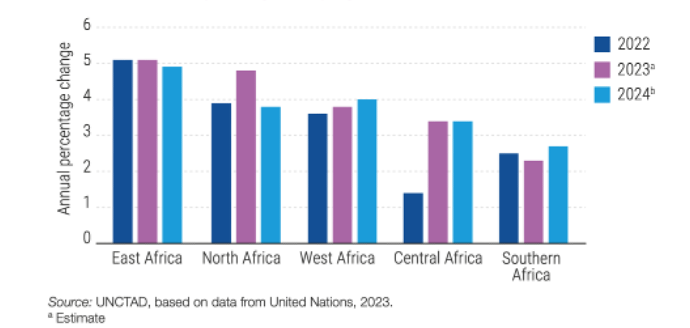
Figure 4: Africa’s gross domestic product by region, 2022-2024.
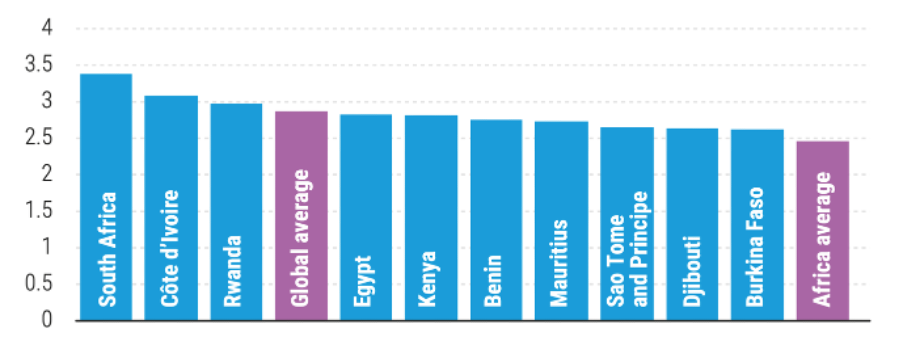
Figure 5: Logistics performance index score, 2018 in selected African countries.
c) Cons of TFSPs for Central African economies
- Initial implementation costs: The World Bank’s TFSPs face high upfront costs for infrastructure development and technology integration. For example, the ‘$40 million flagship technical assistance program’ would present a significant fiscal burden to Central African governments if taken on as a loan over a grant (Institutional Economics, 2019). The stark costs for TFSPs are particularly worrisome as African economies face limited fiscal space with Figure 6 (UNCTAD, 2023) illustrating the current account deficits across Africa over the last decade. Further, there is potential for debt accumulation and high-interest payments from World Bank development loans which is heightened due to many Central African economies being price-takers and major price volatile commodity exporters.
- Risk of uneven benefits: TFSPs often focus funding and development within urban regions and trade-specific sectors as their sole goal is to improve a country’s trade capacity and efficiency. This may result in disparities in the distribution of benefits across Central African regions creating an urban-rural divide in access to improved trade facilities and the potential neglect of small-scale traders and informal sectors (Karingi, 2023).
- Dependency on external funding: The large-scale funding and grants the TFSP provides have the capacity for over-reliance by Central African developing economies. This may result in limited national ownership and a lack of domestic agency over significant infrastructure projects (Otsuki, 2003). Further, CEMAC countries will likely be highly vulnerable to changes in international funding priorities, which may result in the TFSP closing as a source of finance. This has wide-reaching economic implications if there is an evident lack of internal finance to substitute World Bank operations (Thales, 2017); likely resulting in an exacerbated infrastructure financing gap.
- Social and environmental impacts: The nature of mass infrastructure development involves large masses of land, which may result in the forced displacement of communities – under Central African government’s ‘eminent domain’ – and environmental degradation. This has significant social and environmental impacts placing a need for an expansion of regulatory safeguards to prevent undue damage to society (White, 2021) and the natural landscape.
- Implementation challenges: There is significant plausibility for government failure via the mishandling of funds or general misconduct by Central African government officials under Public Choice Theory (Stephane et al., 2021). Further, there remain significant bureaucratic hurdles and institutional resistance to funding reform using the TFSP inhibiting efficient usage of World Bank funds (Igbokwe et al., 2019). Yet, even with effective use of funds, Figure 7 illustrates the poor labor productivity growth across 21st century Africa resulting in a likely unproductive labor force to carry out Central African infrastructure projects reducing the net positive trade impact (UNCTAD, 2023).
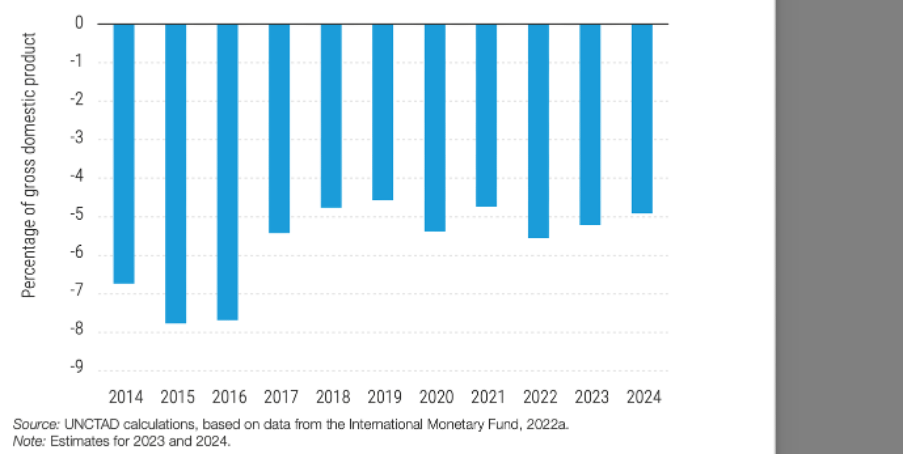
Figure 6: Africa’s average current account balance, 2014-2024.
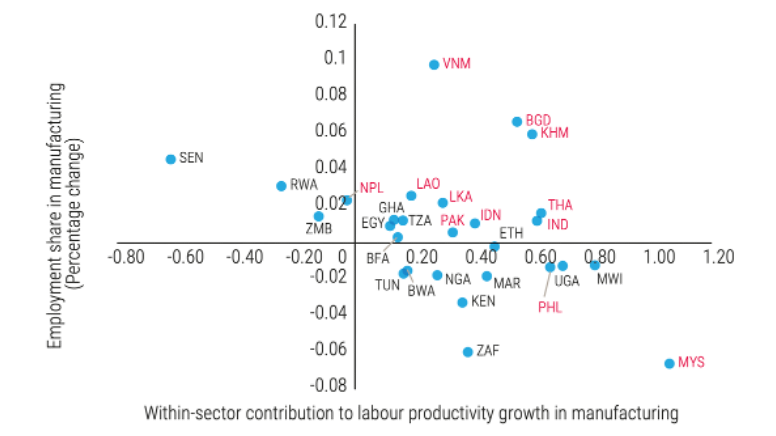
Figure 7: Labout productivity growth in selected African countries, 2001-2019.
In conclusion, the World Bank’s Trade Facilitating Support Programs provide a mixture of grants and loans to developing economies to aid in improving trade capacity and volume. WBG efforts to streamline trade policy, customs procedures, and fund infrastructure development have undoubtedly enhanced global trade; yet imperil Central African economies’ long-term fiscal security, owing to their limited budget headroom and overexposure to debt. As such, TFSPs have an important standing in allowing CEMAC to participate in global supply chains, but over dependency and exposure to external funding must be carefully mitigated to retain Central African fiscal agency.
VIII. Case Study (Cameroon)
a) Overview of Cameroon’s economic status
Cameroon is a nation in Central Africa with access to water through its main port Douala. The Cameroonian economy is considered developing, with much of its market heavily dependent on oil and other extractive industries (World Bank, 2024). The three previously discussed policies – SAP, Tariff Reduction and TFSP – are in action or have historically been implemented in Cameroon and their use will be discussed in this section.
b) Impact of the International Monetary Fund’s SAPs on Cameroon’s economy
An enhanced SAP (or ESAP) was implemented in Cameroon on July 1, 1997. The IMF lists eight sections under which all policies fall: incentives policies, fiscal policy and public sector reform, financial sector policy, external debt, other sectoral adjustment policies, social policies, environment and forests, and improvement of statistics.
In purely macroeconomic terms the results were largely positive according to the IMF. Inflation decreased from 5.2% to 2.8% from 1996 to 1997, and a stable 5% GDP growth rate was achieved the following year. Exports and imports both fell, however the IMF attributed this occurrence to the Asian crisis. While the statistics may not directly correlate solely to the ESAP, economic growth was clearly demonstrated in part because of the policies despite external uncertainties such as trade. (International Monetary Fund & World Bank, 1999)
c) Impact of the World Trade Organization’s tariff reduction on Cameroon’s economy
The World Trade Organization analyzed tariff reduction policies for Cameroon in their Trade Policy Review, 1995. They found that before 1994, “Cameroon’s tariff yielded relatively low revenue because of the widespread use of exemptions” (World Trade Organization, 1995). Therefore, in the New General Trade Schedule ratified in 1994 with CACEU – the Central African Customs and Economics Union – members, Cameroon’s new policy called for escalated tariffs rather than reduction to balance their rampant exemptions. Cameroon is an exception in regard to tariff reduction in Central Africa, and it remains a valuable strategy to expand trade, support economic growth, and increase consumer benefits within the region.
d) Implementation and impact of the World Bank’s TFSPs on Cameroon’s economy
The World Bank Organization’s Cameroon Economic Update of 2012 showed a significant increase, and yet still much room for improvement, for Cameroon’s Trade Facilitation Support Program. While most Cameroonian exports still go to the EU, they have been able to expand into other markets such as China, India, and other African countries (see Figure 8 below), leading to significant economic growth as their export possibilities surge and more inexpensive import options increase.
To continue facilitating their trade, the World Bank suggested both “capturing opportunities in the wider regional market through the ECOWAS, [the Economic Community of West African States]” and “consolidating its [Cameroon’s] position in the CEMAC market” (World Bank, 2012). Both measures would include expanding their local trade routes through “a number of policies that would ensure factor mobility” (World Bank, 2012).
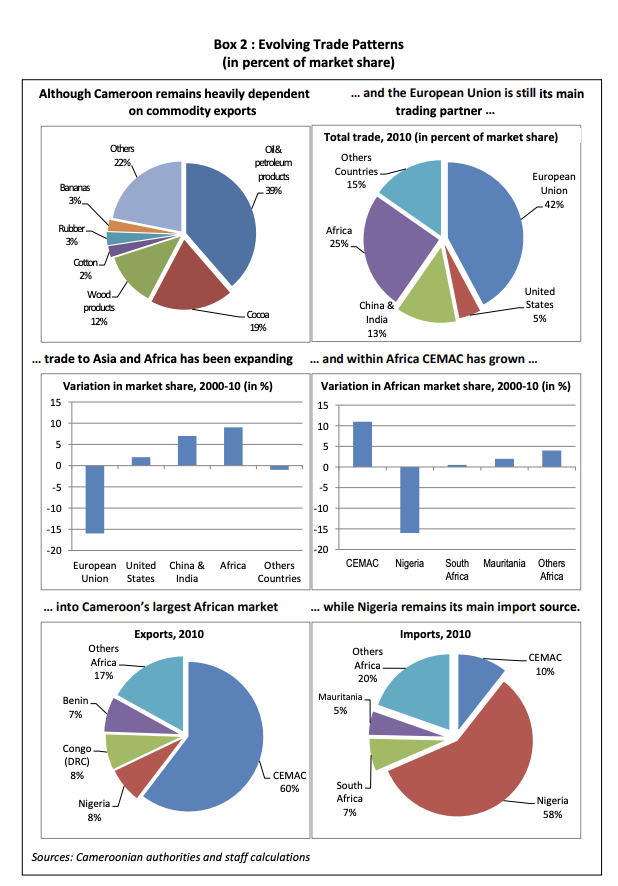
Figure 8: Six representations of Cameroon’s expansion into trading partners beyond the European Union and growth within CEMAC (World Bank, 2012).
IX. Comparative Analysis
a) Similarities and differences in the advantages and disadvantages of the three policies
The three policies – the SAPs of the IMF, the tariff reduction of the WTO, and the TFSPs of the WBG – all fall under trade liberalization, and ergo naturally share core similarities, but also core differences. While all policies consider various reforms for trade development, the WBG focuses more heavily on improving infrastructure than the IMF and WTO, which focus more on written regulations and policies, even sharing some similar policies such as tariff reduction.
As mentioned in their respective chapters, trade liberalization can lead to a number of advantages and disadvantages, most of which the three supranational organizations share as they all stem from increased trade. For example, all three policies lead to an increase in market competitiveness and a wider range of trade partners due to the increase in trade, which also brings about lower prices for consumers. The increased trade could also lead to higher domestic unemployment rates and a dependence on imports, and importantly high debt can also result from all three policies depending on loan use.
b) Overall effectiveness of these policies in promoting development in Central Africa
The effectiveness of these policies depends heavily on the specific country’s economic state, as can be seen in the case study when Cameroon increased tariffs rather than reducing them. Not all policies can be recommended to every country, and their previous regulations need to be taken into consideration. Regulation reform should aim to be specific to the industry, while infrastructure improvement should be specific to the region so that the highest return can be made on investment.
However, as an overall trend, trade expansion – the aim of all three policies – both with other African countries and intercontinentally is a significant step towards providing export and import opportunities. Therefore, once adjusted to an individual nation’s economic context, the three policies can provide a foundation for increased trade, and through that, economic development.
X. Future Prospects and Recommendations
a) Potential improvements to existing policies
Trade liberalization is a crucial practice for developing economies, but it can also incite potential negative impacts. Financial management plans is one potential addition, as fiscal deficits resulting from tariff reduction can lead to overbearing debt. Another improvement to existing policies is the consideration of local markets, and ensuring support of young industries through targeted tariffs so they can grow to compete with the international market.
b) Alternative approach to trade liberalization for developing economies (protectionism)
There are many different policies regarding economic development, but the other most targeted at trade is protectionism. Protectionism is the opposite of trade liberalization. Rather than increased market freedom, protectionism promotes domestic production by imposing tariffs and “otherwise limiting foreign goods and services in the [local] marketplace” (Corporate Finance Institute, n.d.).
Protectionist policies can also lead to economic growth, however primarily only short-term. Local industries will not need to compete with the international market, so they can grow and become more efficient, but if protectionism is sustained for too long it can lead to a stagnation of advancements, a lack of consumer choice, and economic isolation which can introduce political and cultural downsides.
c) Role of regional cooperation in Central Africa
Regional cooperation is key in Central Africa for further economic development as it can promote trade within Central Africa as well as more broadly.
Trade routes are shorter due to the nations’ proximity, and therefore less infrastructure is required and the cost and time spent journeying is lower. Additionally, many Central African countries have different core exports, and can therefore trade them with one another. For example, while Equatorial Guinea exports primarily timber, Gabon exports primarily petroleum and the Central African Republic exports largely agriculture (Myers, 2016), meaning trade with one another is significantly beneficial.
Regional cooperation is also advantageous beyond increasing trade within Central Africa. Political and social cooperation is crucial in facilitating international trade as policies can pass more easily through forums such as CEMAC and ECOWAS. Additionally, nations can support one another financially and share infrastructure.
XI. CONCLUSION
a) Summary of key findings
This research paper examines the effects of trade liberalization policies on Central African economies, with a particular focus on the roles played by the World Trade Organization (WTO), International Monetary Fund (IMF), and World Bank. It highlights that trade liberalization, through measures such as tariff reductions and trade facilitation programs, has significantly contributed to economic growth and diversification in the region. Countries like Cameroon and the Central African Republic have seen increased export volumes and foreign direct investment, which have been crucial for their economic development.
Additionally, the reduction in tariffs has lowered consumer prices and enhanced access to a variety of affordable products, thereby boosting consumer welfare and stimulating domestic demand. Infrastructure improvements, particularly through the World Bank’s Trade Facilitation Support Programs (TFSPs), have further enhanced trade efficiency by reducing costs and increasing trade volumes.
However, these policies have also posed significant challenges. Many Central African countries rely heavily on tariffs for government revenue, and their reduction has led to fiscal deficits, constraining public spending on essential services such as healthcare and education. Moreover, exposure to international competition has been challenging for local industries, leading to potential job losses and business closures. Despite these challenges, the overall impact of trade liberalization on Central Africa has been positive, promoting economic growth and integration into global markets.
b) Reflection on the complex nature of trade liberalization impacts
Trade liberalization has a complex impact on Central African economies, bringing both significant benefits and notable challenges. On the positive side, tariff reductions and trade facilitation have boosted exports, attracted foreign direct investment (FDI), and lowered consumer prices, leading to enhanced consumer welfare and economic diversification. These changes are crucial for reducing dependency on a narrow range of commodities and fostering broader economic development.
However, these policies also present challenges. Reduced tariffs have led to fiscal deficits, as many Central African countries rely heavily on tariff revenues to fund essential public services. Additionally, increased competition from international markets threatens local industries, potentially causing job losses and business closures.
The mixed results highlight the need for balanced policies that maximize the benefits of trade liberalization while mitigating its negative effects. This requires strengthening domestic revenue systems, investing in infrastructure, and supporting local industries. Regional cooperation through frameworks like CEMAC can also enhance intra-regional trade and economic stability. Thus, while trade liberalization offers significant growth opportunities, a nuanced approach is essential to ensure sustainable development in Central Africa.
c) Final thoughts on balancing trade liberalization with development needs in Central Africa
Balancing trade liberalization with the development needs of Central Africa requires a strategic and nuanced approach. While policies such as tariff reductions and trade facilitation have promoted economic growth, diversified exports, and lowered consumer prices, they also pose challenges like fiscal deficits and pressures on local industries.
To address these challenges, Central African countries must strengthen domestic revenue systems to offset the loss of tariff income, invest in infrastructure to improve trade efficiency and provide targeted support for small and medium enterprises to help them compete in open markets. Additionally, regional cooperation through frameworks like the Central African Economic and Monetary Community can enhance intra-regional trade and economic resilience.
By focusing on capacity building, improving governance, and ensuring that the benefits of trade are widely distributed, Central African countries can leverage trade liberalization as a tool for sustainable development. Policymakers must carefully balance these elements to ensure that trade policies contribute to long-term economic stability and inclusive growth.
Bibliography
African Development Bank. (n.d.). Central Africa Regional Overview. African Development Bank Group. Retrieved July 20, 2024. URL: <https://www.afdb.org/en/countries/central-africa/central-africa-overview>
Corporate Finance Institute. (n.d.) Protectionism. URL: <https://corporatefinanceinstitute.com/resources/economics/protectionism/>
Dollar, D., & Irwin, D. A. (2022, June 13). A short history of trade liberalization in developing countries. Brookings. URL: <https://www.brookings.edu/articles/a-short-history-of-trade-liberalization-in-developing-countries/>
Economics, International. Stocktaking of the World Bank’s Trade Facilitation Support Programme – International Economics. Tradeeconomics.com. May 2019. Retrieved 27 July 2024. URL: <https://tradeeconomics.com/projects/stocktaking-of-the-world-banks-trade-facilitation-support-programme/#:~:text=The%20Trade%20Facilitation%20Support%20Program>.
Essers, D. (2013). “Developing country vulnerability in light of the global financial crisis: Shock therapy?” in Review of Development Finance, 3(2), 61–83. URL: <https://doi.org/10.1016/j.rdf.2013.02.001>
European Centre for Development Policy Management. (2019). Trade policy and economic integration in Africa. URL: <https://ecdpm.org/publications/trade-policy-economic-integration-africa/>
FAO. (2024). Chapter 4: Structural Adjustment and Food Stabilization and Security Policy. URL: <https://www.fao.org/4/AB788E/ab788e08.htm>
fpifadmin. (2005, October 13). Structural Adjustment Programs & Poverty Reduction Strategy – FPIF. Foreign Policy in Focus. URL:<https://fpif.org/structural_adjustment_programs_poverty_reduction_strategy/>
Global Alliance for Trade Facillitation. (2021). Trade Facilitation Reform as a Trust Catalyst: A Case Study in Building and Measuring Trust Between the Public and Private Sectors in Colombia – Insights from the Global Alliance for Trade Facilitation. Lessons Learned Series LL-04.
Global Trade Liberalization and the Developing Countries — An IMF Issues Brief. (2024). URL: <https://www.imf.org/external/np/exr/ib/2001/110801.htm>
Goals Fund, Sustainable Development. (2016, December 23). Trade Facilitation and Development. Sustainable Development Goals Fund. Retrieved 27 July 2024. URL: <www.sdgfund.org/trade-facilitation-and-development>
Goutte, Stephane, et al. (2021). “Corruption and Governance in Central Africa: An Analysis of Public and Regional Drivers of Corruption” in SSRN Electronic Journal, 7(2). Retrieved 9 May 2021. URL: <https://doi.org/10.2139/ssrn.3808716>
Group Archives, The World Bank. (2022, July 8) Douala Port Project – Cameroon. Retrieved 27 July 2024. URL: <https://thedocs.worldbank.org/en/doc/794961658841905441-0560011975/original/WorldBankGroupArchivesFolder1295028.pdf>
Hufbauer, G. C., & Schott, J. J. (2005). NAFTA revisited: Achievements and challenges. Institute for International Economics.
Igbokwe-Ibeto, Chinyeake J. (2019, November 18) “African Bureaucracy and Public Administration: Analysing the Normative Impediments and Prospects” in Africa’s Public Service Delivery & Performance Review, 7(1), 11. URL: <apsdpr.org/index.php/apsdpr/article/view/323/497 >
International Monetary Fund. (2021). Regional economic outlook: Sub-Saharan Africa. URL: <https://www.imf.org/en/Publications/REO/SSA>
International Monetary Fund, & World Bank. (1999, August 9). Cameroon — Enhanced Structural Adjustment Facility. URL: <https://www.imf.org/external/np/pfp/camer/cam01.htm>
ipsadmin. (1998, April). Structural Adjustment Programs – Institute for Policy Studies. Institute for Policy Studies. URL: URL: <https://ips-dc.org/structural_adjustment_programs/>
MJE. (2024, April 29). “Structural Adjustment’s Complex Legacy in Sub-Saharan Africa” in Michigan Journal of Economics. URL: <https://sites.lsa.umich.edu/mje/2024/04/29/structural-adjustments-complex-legacy-in-sub-saharan-africa/>
Myers, J. (2016, May 10). Which are Africa’s biggest exports?. World Economic Forum. URL: <https://www.weforum.org/agenda/2016/05/which-are-africas-biggest-exports/>
Luke, D. (2020, August 20). ‘Why trade matters for African development’ in LSE Business Review. URL: <https://blogs.lse.ac.uk/businessreview/2020/08/25/why-trade-matters-for-african-development/>
Pacific, Y. K. T. (2017). ‘Slow Growth of Foreign Direct Investment in Central African Republic’ in Global Business Review, 18(6), 1435–1446. URL: <https://doi.org/10.1177/0972150917713093>
The Basics of Tariffs and Trade Barriers. (2024). Investopedia. URL: <https://www.investopedia.com/articles/economics/08/tariff-trade-barrier-basics.asp>
The IMF and The Poor Pamphlet 52 – IMF-Supported Programs and the Poor. (2024). URL: <https://www.imf.org/external/pubs/ft/pam/pam52/3.html>
The IMF’s Role in Structural Adjustment. (2024). JSTOR. URL: <https://www.jstor.org/stable/2566066>
Thirlwall, A. P. (2000). ECONOMIC RESEARCH PAPERS N O 63 “Trade, Trade Liberalisation and Economic Growth: Theory and Evidence” in Economic Research Papers (63) URL: <https://www.afdb.org/fileadmin/uploads/afdb/Documents/Publications/00157660-EN-ERP-63.PDF>
Trade and Development Report 2020. (2020) UNCTAD. URL <unctad.org/webflyer/trade-and-development-report-2020>
Trade Facillitation Agreement Facility, World Bank Group, and World Trade Organization. (2022). World Bank Group TFAF. Retrieved 27 July 2024. URL: <www.tfafacility.org/agency/world-bank-group>
Trade Liberalization: Definition, How It Works, and Example. (2024). Investopedia. URL: <https://www.investopedia.com/terms/t/trade-liberalization.asp>
UNCTAD, and Economic Development in Africa Report. (2023). New Opportunities for Global Supply Chain Diversity and Sustainability: The Comparative Advantage of Africa 2.1 Africa: Charting Its Way through Turmoil and Crisis.
United Nations, and Stephen Karingi. (2023). Report on Digital and Sustainable Trade Facilitation: UN Global Survey on Digital and Sustainable Trade Facilitation. URL: <www.untfsurvey.org/report>
UN Trade and Development. (2019, September 16). Boosting trade facilitation, a leverage for Central Africa regional integration. UNCTAD. URL: <https://unctad.org/news/boosting-trade-facilitation-leverage-central-africa-regional-integration>
Vibeke Bjornlund, Henning Bjornlund, & André van Rooyen. (2022). “Why food insecurity persists in sub-Saharan Africa: A review of existing evidence” in Food Security, 14(4), 845–864. URL: <https://doi.org/10.1007/s12571-022-01256-1>
Wikipedia Contributors. (2024, January 10). Structural adjustment. Wikipedia; Wikimedia Foundation. URL: <https://en.wikipedia.org/wiki/Structural_adjustment#:~:text=Structural%20adjustment%20programs%20(SAPs)%20consist,countries%20that%20experience%20econo>
Wilson, J. S., et al. (2003, December 2) “Trade Facilitation and Economic Development: A New Approach to Quantifying the Impact” in The World Bank Economic Review, 17(3), 367–389. Retrieved 7 October 2019.URL: <https://doi.org/10.1093/wber/lhg027>
World Bank. (2012). Cameroon Economic Update, January 2012: Unlocking the Labor Force, An Economic Update on Cameroon with a Focus on Employment. World Bank, Cameroon. URL: <http://hdl.handle.net/10986/26650>
World Bank. (2021). Strengthening domestic revenue mobilization to sustain growth in a fragile state. URL:<https://documents1.worldbank.org/curated/en/380841574268>
World Bank. (2024, March 12). Cameroon Overview. URL: <https://www.worldbank.org/en/country/cameroon/overview>
World Bank Group, Independent Evaluation Group. (2018, February 21). Contribution and Effectiveness of Trade Facilitation Measures
World Bank Group. (2021). Trade and integration in Africa. URL: <https://www.worldbank.org/en/region/afr/publication/trade-integration-africa>
World Bank Group. (2024). “Trade Facilitation Support Program (TFSP).” World Bank. URL: <www.worldbank.org/en/programs/trade-facilitation-support-program>
World Bank, the United Nations Conference on Trade and Development and the Organisation for Economic Co-operation and Development. (2019). “The Critical Role of Trade Facilitation in Supporting Economic Diversification and Structural Reforms.” in The Critical Role of Trade Facilitation in Supporting Economic Diversification and Structural Reform, 6. URL: <www.wto.org/english/res_e/booksp_e/aid4trade19_chap6_e.pdf>
World Trade Organization. (1995, February 10). Trade Policy Review – Cameroon. URL: <https://www.wto.org/english/tratop_e/tpr_e/tp002_e.htm>
World Trade Organization. (2021). The history of multilateral trading system. URL: <https://www.wto.org/english/thewto_e/history_e/history_e.htm>
World Trade Organization. (2023). Trade policy review: Cameroon. URL: <https://www.wto.org/english/tratop_e/tpr_e/tp002_e.htm>
World Trade Organization. (2023). Trade policy review: Central African Republic. URL: <https://www.wto.org/english/tratop_e/tpr_e/s169-02_e.doc>
World Trade Organization. (2023). Trade policy review: Dominican Republic. URL: <https://www.wto.org/english/tratop_e/tpr_e/tp025_e.htm>
WTO Economic Research and Analysis Gateway – World Tariff Profiles. (2018). URL: <www.wto.org/english/res_e/reser_e/tariff_profiles_e.htm>




